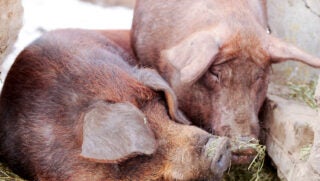Kansas State University recently received a $957,000 grant from the National Institute of Food and Agriculture (NIFA) to utilize drones in their latest wheat breeding research.
Unmanned aerial vehicles (UAVs), more commonly known as drones, are quickly becoming recognized as a valuable tool for mapping agricultural crops. Kansas State University has been developing uses of UAVs to collect data on thousands of plots, including work in Kansas, Mexico, and India.
“Perhaps the greatest bottleneck currently in plant breeding and genetics is effectively generating precision measurements of plant characteristics in the field,” said project director Jesse Poland, assistant professor of plant pathology and agronomy at Kansas State University, in a recent release. “The goal of this project is to deliver in-season yield predictions by building models that combine genetic information from DNA sequencing and crop physiology that we will gather from UAV measurements on tens of thousands of breeding lines.”
For this grant, Poland said the university will use information from the drones to evaluate large populations of candidate varieties under field conditions in wheat-breeding nurseries, then build a database that breeders can use when developing future varieties.
He said UAVs will provide “millions of collected images” that researchers will match with field values to develop a phenotype of wheat varieties. A phenotype is a complex map of an organism’s observable characteristics — such as its biochemical or physiological properties — and the influence of the environment on those characteristics.
Scientists will use the phenotype to evaluate desired agronomic traits of wheat based on the UAV images at a speed and scale much faster and larger than what can be done by manual measurements, according to Poland.
Plot-level data will give wheat breeders real-time insight on crop performance that they can use to more precisely — and more quickly — improve future varieties.
“Plant breeding is really a numbers game,” Poland said. “If we can use new technologies like remote sensing with these low-cost UAVs, then we provide the breeders with the tools to look through many more candidate varieties and increase the chances of finding ones that are really excellent and can become the next best varieties to release to farmers.”


